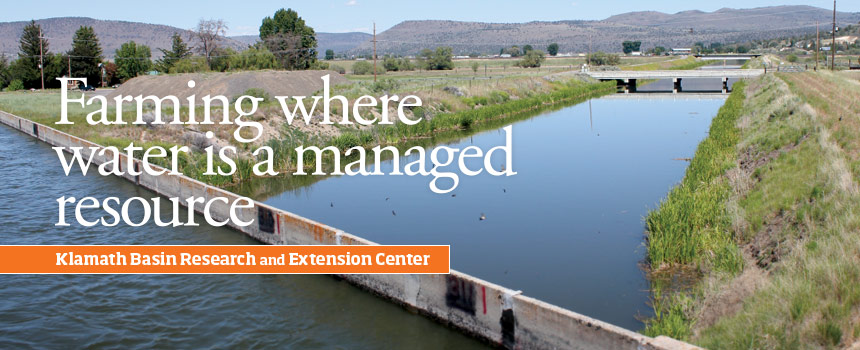Klamath Basin community perseveres through water issues

The upper Klamath Basin was opened to expansive agriculture in 1906, when the U.S. government began large-scale reclamation of wetlands for irrigated farming. After World War II, the Klamath Project offered land to military veterans for homesteading. By the end of the 20th century, 1,400 farms were operating on the Klamath Project, cultivating wheat, alfalfa, potatoes, and other crops.
But available water has rarely served all the basin’s needs. Following a winter drought in 2001, federal officials halted water deliveries to Klamath Project farmers to protect endangered salmon and sucker fish. Angry demonstrators formed a “bucket brigade” to divert water by hand into irrigation canals. Water deliveries resumed the following year, yet river flows were so low during the fall salmon migration that thousands of fish died.
[caption caption="KBREC superintendent Willie Riggs explains some of the water issues in the Klamath Basin. (Photo by Erik Simmons.)"] [/caption]
[/caption]
Community leaders were galvanized to find a solution. They held basin-wide conferences during the following years, bringing communities together to encourage broader awareness and participation. OSU’s Klamath Basin Research and Extension Center was a strong supporter of these stakeholder-based efforts. In 2010, a coalition of farmers, fishermen, tribes, and environmentalists signed the Klamath Basin Restoration Agreement. The price-tag was steep—$800 million over 10 years—and Congress made no move to fund it.
In 2013, drought forced more water shut-offs. U.S. Senator Ron Wyden stepped in and helped create a task force to recommend long-term solutions. The request was specific: find a way to increase water inflows to Upper Klamath Lake through voluntary water idling; create a plan to restore riparian areas and provide regulatory assurances for water and land use; and reduce the project’s price-tag.
By October 2013, the task force delivered a workable plan and reduced estimated costs by more than one third; Wyden called it the “gold standard for building consensus.”
“Water issues in the basin have put neighbor against neighbor and threatened the largest revenue-generating sector in the region,” said Willie Riggs, KBREC director. “Leaders are willing to step up and provide grass-roots solutions in the hope of keeping our agricultural community alive.”
